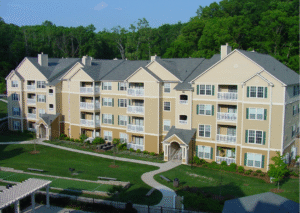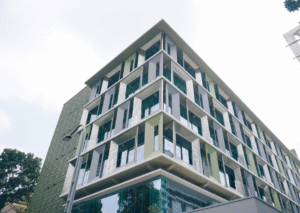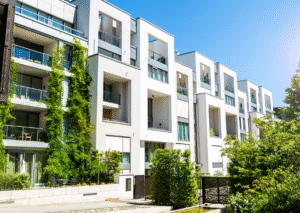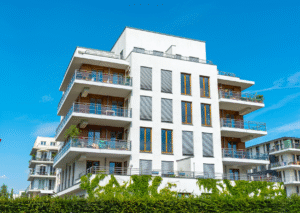What Are Rehab Loans and Why Should Investors Care?
Rehab loans are specialized financing tools designed to help real estate investors purchase and renovate properties with the goal of increasing their value and generating profit. Unlike traditional mortgages, which primarily focus on move-in-ready homes, rehab loans cover both the purchase price and the cost of necessary repairs or upgrades. This financing structure gives investors a way to acquire undervalued properties and transform them into profitable assets.
For investors, rehab loans open doors to properties that may otherwise be inaccessible due to their condition. By providing upfront capital for renovations, these loans enable quicker turnarounds, higher after-repair values (ARV), and stronger returns on investment (ROI) (U.S. Department of Housing and Urban Development).
How Do Rehab Loans Typically Operate?
Rehab loans combine the property purchase price with renovation funds into a single loan. Lenders usually release renovation funds in stages, known as “draws,” after specific project milestones are completed. This ensures that funds are used for their intended purpose and that renovations progress according to plan.
Typical steps in a rehab loan process include:
- Property evaluation – Assessing purchase price, scope of repairs, and projected ARV.
- Loan application and approval – Including detailed renovation plans and contractor estimates.
- Draw schedule setup – Determining how and when renovation funds will be disbursed.
- Project completion and inspection – Confirming work quality before releasing final funds.
This structured approach minimizes risk for lenders and helps investors maintain project discipline (HUD, 2023).
What Are the Main Types of Rehab Loans Available?
Investors can choose from several types of rehab loans depending on their strategy, timeline, and property type:
- FHA 203(k) Loans – Government-backed loans that combine purchase and renovation costs for eligible properties.
- Hard Money Rehab Loans – Short-term, asset-based financing ideal for quick fix-and-flip projects.
- Conventional Renovation Loans – Traditional lenders offering rehab options for qualified borrowers.
- USDA Section 504 Loans – Targeted rural property repair loans for essential safety or accessibility upgrades.
The best choice depends on project scope, investor experience, and turnaround goals (Federal Housing Administration).
How Do Rehab Loans Help Investors Improve ROI?
Rehab loans maximize ROI by increasing both the market value and cash flow potential of an investment property. They allow investors to acquire distressed properties and renovate them to meet or exceed market standards.
Key ROI-boosting factors include:
- Higher ARV – Renovations can lead to substantial property value appreciation.
- Faster Market Entry – Immediate financing enables quicker project starts.
- Improved Rental Rates – Updated properties command higher rents.
- Tax Advantages – Certain renovation expenses may be deductible (Internal Revenue Service).
When planned strategically, rehab loans can transform modest investments into high-performing assets.
What Risks Should Investors Address Before Using Rehab Loans?
While rehab loans offer great profit potential, they also carry certain risks that must be managed:
- Cost Overruns – Expenses exceeding initial estimates.
- Market Shifts – Economic changes that reduce property values.
- Extended Timelines – Construction delays increasing holding costs.
- Loan Terms – Short repayment schedules requiring quick sales or refinancing.
Mitigating these risks requires accurate budgeting, realistic timelines, and reliable contractors (Consumer Financial Protection Bureau).
How Can No Limit Investments’ Services Support Rehab Loan Success?
Partnering with a financing expert like No Limit Investments can help investors align the right loan with the right project. Their services include:
- Fix and Flip Loans – Fast funding for short-term renovation projects.
- BRRRR Strategy Financing – Buy, Rehab, Rent, Refinance, Repeat funding.
- Buy and Hold Mortgages – Long-term financing for rental properties.
- Cash-Out Refinance Loans – Unlock equity to reinvest in new opportunities.
- Short-Term Rental Loans – For vacation and short-stay rental markets.
- DSCR Loans – Income-based qualification for rental properties.
- New Construction Loans – For ground-up builds or large-scale renovations.
- Bridge Loans – Temporary financing to close deals quickly.
This variety ensures that investors can adapt their financing to match evolving project needs.
What Qualities Should Investors Seek in a Rehab Loan Lender?
Selecting the right lender can significantly influence project outcomes. Investors should prioritize lenders who:
- Understand investment strategies – Lenders familiar with investor-focused financing.
- Offer flexible underwriting – Especially for non-owner-occupied properties.
- Provide fast approvals and funding – Crucial in competitive markets.
- Support diverse loan options – Allowing investors to pivot when needed.
Specialized lenders like No Limit Investments can offer tailored solutions that traditional banks often cannot.
How Can Investors Strengthen Their Rehab Loan Applications?
A strong application improves approval chances and can secure better terms. Investors should prepare:
- Detailed renovation plans – Contractor bids and materials lists.
- Accurate ARV projections – Based on comparable sales data.
- Proof of relevant experience – Prior successful projects or management skills.
- Complete financial documentation – Credit reports, tax returns, and statements.
This preparation shows lenders the investor is organized and reduces perceived risk.
How Can Rehab Loans Fit into a Long-Term Wealth-Building Strategy?
Rehab loans are not just for short-term flips—they can be integrated into a scalable investment model like the BRRRR strategy. This allows investors to renovate, rent, refinance, and reinvest while holding appreciating assets.
Over time, this approach builds both equity and income streams, turning rehab projects into a cornerstone of financial growth.
How Can You Get Started with the Right Rehab Loan Partner?

If you’re ready to turn underperforming properties into profitable investments, the next step is choosing a partner that understands your vision. No Limit Investments offers the expertise, speed, and financing variety to help you achieve your goals. Whether you’re flipping, renting, or building from the ground up, their investor-focused solutions can make it happen. Book an appointment today!
Final Thoughts
Rehab loans offer a powerful pathway for investors to unlock value in distressed properties and significantly boost ROI. By understanding loan types, managing risks, and leveraging the right financing partner, investors can transform potential into profit. With preparation and strategy, rehab loans can fuel both short-term gains and long-term wealth.
Works Cited
Consumer Financial Protection Bureau. Know Before You Owe: Mortgages. CFPB, 2023, www.consumerfinance.gov/mortgage.
Federal Housing Administration. 203(k) Rehabilitation Mortgage Insurance Program. U.S. Department of Housing and Urban Development, 2023, www.hud.gov/program_offices/housing/sfh/203k.
Internal Revenue Service. Deducting Business Expenses. IRS, 2023, www.irs.gov/businesses/small-businesses-self-employed/deducting-business-expenses.
U.S. Department of Housing and Urban Development. Rehabilitation Mortgage Insurance. HUD, 2023, www.hud.gov/program_offices/housing/sfh/203k/203kabou.
Frequently Asked Questions (FAQs)
- What is the difference between a rehab loan and a traditional mortgage?
A rehab loan covers both the property purchase price and renovation costs in a single loan, while a traditional mortgage only covers the purchase price of a move-in-ready property. - How quickly can I get approved for a rehab loan with No Limit Investments?
Approval times vary by loan type, but No Limit Investments specializes in fast funding to help investors move quickly on competitive opportunities. - Can rehab loans be used for rental properties, or are they only for flips?
Rehab loans can be used for both rental and flip properties, depending on the investor’s strategy. No Limit Investments offers options for both short-term and long-term investment goals. - What credit score is typically required for a rehab loan?
Credit score requirements depend on the loan program. Some investor-focused loans may allow more flexible underwriting than traditional banks, especially with strong project plans and ARV projections. - How does No Limit Investments help reduce the risks of rehab projects?
They offer tailored loan products, flexible underwriting, and expert guidance to align financing with project timelines and goals, helping investors manage costs and maximize ROI.







